AI Edition
Please check all the recent information about the attractions mentioned in this itinerary then plan the visit at your own pace.
Vancouver is a major city in western Canada, located in the Lower Mainland region of British Columbia. It is the most populous city in the province, with a population of over 631,000 people as of 2021. The Greater Vancouver area has a population of over 2.5 million people, making it the third-largest metropolitan area in Canada.
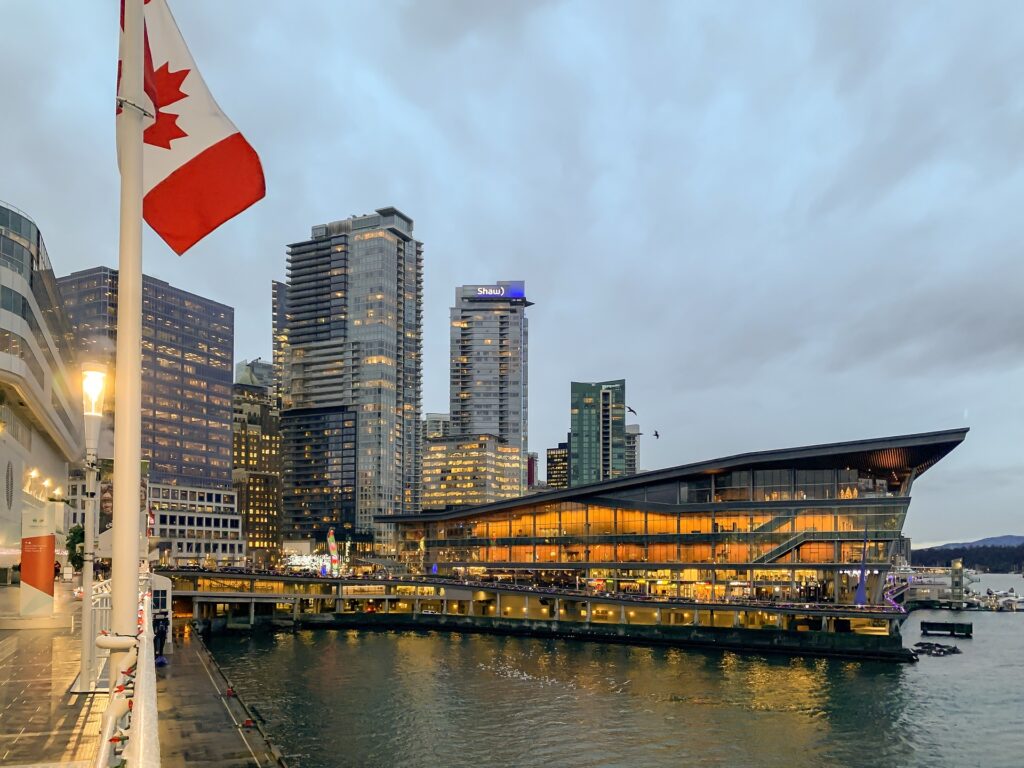
Image by Simon Park from Pixabay
Vancouver is well known for its scenic beauty. It is surrounded by mountains and the Pacific Ocean, and it also has a thriving downtown area with a number of skyscrapers. The city’s residents enjoy outdoor activities like hiking, skiing, and mountain biking because of the city’s close proximity to nature.
The city is culturally diverse and has a vibrant food scene, with influences from Asia, Europe, and the local seafood and farm-to-table produce. Neighborhoods such as Chinatown, Gastown, and Granville Island offer unique cultural and dining experiences.
Vancouver also has a bustling arts scene, hosting numerous film festivals and being a major center for film production. It’s often called “Hollywood North” due to its popularity as a filming location for both movies and television shows.
Moreover, Vancouver is known for being an environmentally friendly city with a high standard of living. It consistently ranks among the top five worldwide cities for livability and quality of life.
Here’s a suggested 3-day itinerary for Vancouver. This itinerary includes a mix of sightseeing, outdoor activities, cultural experiences, and dining.
Day 1:
Granville Island is a vibrant shopping district located in the heart of Vancouver. Despite its name, it’s actually a peninsula, not an island. It sits just south of downtown Vancouver under the south end of the Granville Street Bridge.
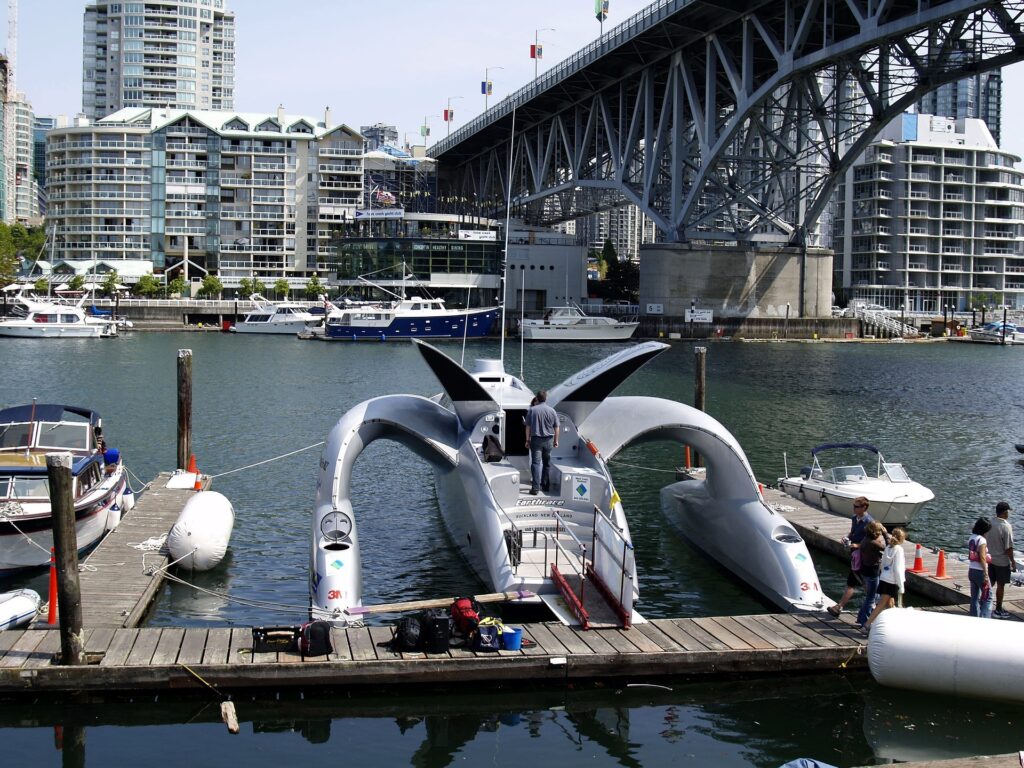
Image by Brigitte Werner from Pixabay
Originally an industrial manufacturing area, Granville Island was transformed into a thriving hub of culture, food, and unique attractions in the 1970s. It’s now renowned for its large public market, boutiques, restaurants, theaters, galleries, and a popular kids-only market.
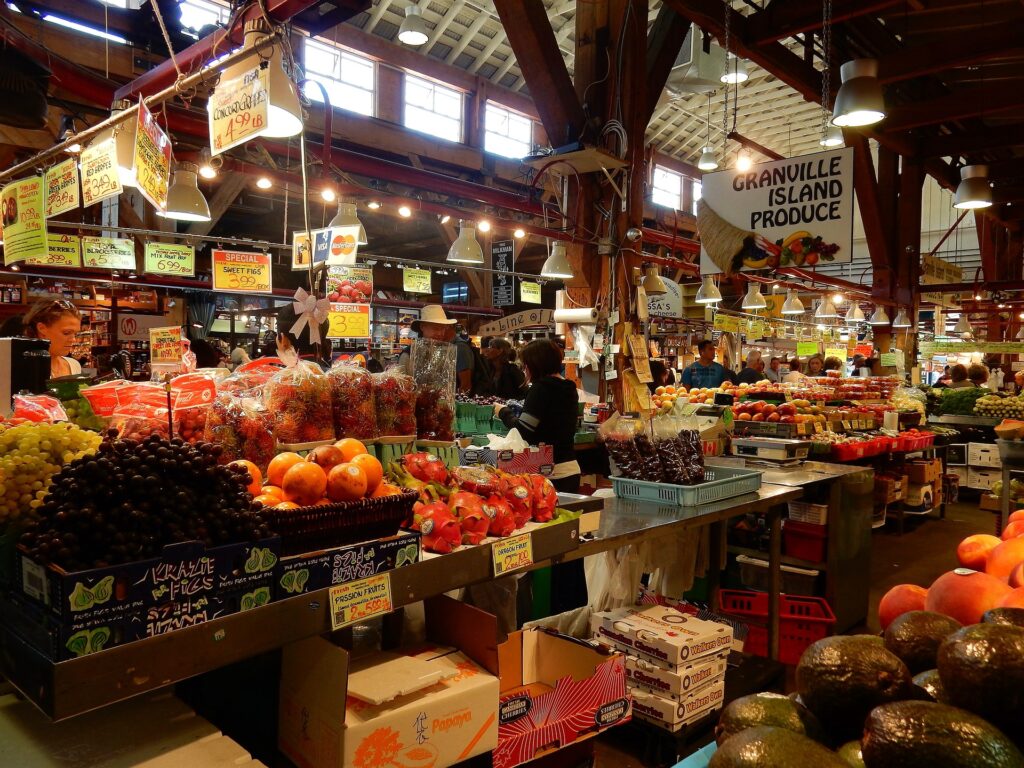
Public Market Image by Ptra from Pixabay
Key features and attractions of Granville Island include:
- Granville Island Public Market: Known as one of Canada’s best open-air markets, this is the heart of the island. It boasts stalls that offer fresh produce, gourmet foods, baked goods, and seafood. You’ll also find unique handcrafted products and gifts.
- Granville Island Brewing: Vancouver’s oldest microbrewery offers guided tours that let you learn about (and taste) a variety of craft beers.
- Arts and Culture: The island is home to several theater companies, including the Arts Club Theatre Company and the Vancouver TheatreSports League. There are also numerous art galleries showcasing local artists and artisans.
- Maritime Market and Marina: This is a working marina, boatyard, and marketplace where you can rent boats, kayaks, and paddleboards, or take guided boat tours.
- Kids Market: A paradise for kids, with over 25 shops, services and activities catered to children and their families. It also has an Adventure Zone, featuring a multi-level play area.
- Emily Carr University of Art and Design: While the main campus has moved, there is still a presence of the university on the island with art studios and galleries, showcasing student and alumni work.
One of the fun ways to get to Granville Island is by the Aquabus or False Creek Ferries, small passenger ferries that crisscross False Creek and offer a unique view of the city. There’s also a large parking lot for those driving, but it can fill up quickly due to the area’s popularity.
Please remember to check the operating hours of each place before your visit as times may vary. After breakfast, take a walk around the island and visit the various shops and galleries.
In the afternoon, you can head to Stanley Park, a massive park located right next to downtown Vancouver. Stanley Park is a renowned urban park. It’s one of the city’s main tourist attractions, covering an area of about 1,001 acres. The park is notably larger than New York City’s Central Park and almost half the size of London’s Richmond Park.

Image by Brigitte Werner from Pixabay
One of the greatest features of Stanley Park is its forested area, with trees that are hundreds of years old, some reaching as high as 76 meters (250 feet) and more. The park is predominantly surrounded by water, with the Burrard Inlet to the north and English Bay to the west.

Lions Gate Bridge Image by ilkaygokhanozel from Pixabay
Stanley Park offers a variety of amenities, including walking and biking paths, such as the famous seawall which circumnavigates the park, a collection of totem poles, beaches, picnic areas, playgrounds, and natural, cultural, and historical landmarks. Other attractions include the Stanley Park Zoo, the Vancouver Aquarium, the Stanley Park Pavilion, the Malkin Bowl, and the Brockton Point and Prospect Point lighthouses.
“Girl in a Wetsuit” is a famous sculpture is situated in the waters of Stanley Park, near the Vancouver Rowing Club. The sculpture depicts a female figure sitting on a rock, wearing a wetsuit, and looking out towards the Burrard Inlet.
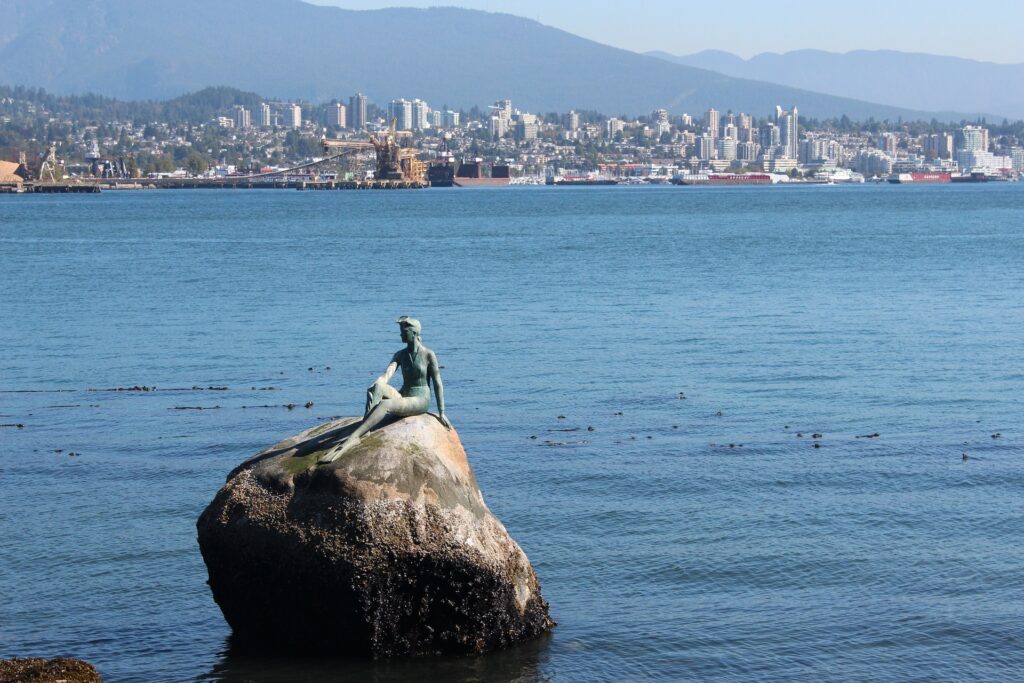
Girl In A Wetsuit Image by Kent Goodman from Pixabay
The sculpture was created by Elek Imredy, a Hungarian artist, in 1972. It was inspired by the iconic statue of “The Little Mermaid” in Copenhagen, Denmark. However, instead of a mermaid, the “Girl in a Wetsuit” sculpture portrays a modern figure wearing a wetsuit, reflecting the connection between Vancouver and its coastal environment.
The statue has become a beloved symbol of Vancouver and is often visited by locals and tourists alike. It has gained recognition for its unique blend of art and maritime culture. The location of the sculpture offers beautiful views of the surrounding waterfront and the mountains.
The park is named after Lord Stanley, the sixth Governor General of Canada. In 1888, he dedicated the park for the “use and enjoyment of peoples of all colors, creeds, and customs, for all time.”

Image by robinsonk26 from Pixabay
If you’re up for it, rent a bike and cycle the seawall, a paved path that loops around the park with stunning views of the city and harbor.
After a long day, dine in one of the restaurants in the West End, an area known for its diverse food scene. The choices range from high-end seafood to cozy sushi spots and many international cuisines.
The term “West End” refers to a neighborhood located in the downtown area of Vancouver. The West End is situated on a peninsula bordered by Stanley Park to the northwest and downtown Vancouver to the east.
The West End is known for its vibrant and diverse community, characterized by residential buildings, parks, and commercial areas. It is a densely populated neighborhood that offers a mix of high-rise apartments, condominiums, and some single-family homes. The area is popular among residents due to its central location and proximity to various amenities.
Robson Street, a major commercial street in Vancouver, runs through the West End and is known for its vibrant shopping, dining, and entertainment options. Denman Street and Davie Street are also popular streets within the neighborhood, offering a wide array of restaurants, cafes, and local businesses.
English Bay Beach, located along the neighborhood’s southern edge, is a popular destination for both residents and visitors. It offers stunning views of the ocean, picnic areas, and various recreational activities.
The West End is known for its diverse and inclusive community, with residents from different cultural backgrounds. It has a lively atmosphere, particularly during the summer months when festivals and events take place, attracting both locals and tourists.
Overall, the West End of Vancouver is a dynamic and desirable neighborhood, offering a mix of urban conveniences, natural beauty, and a welcoming community.
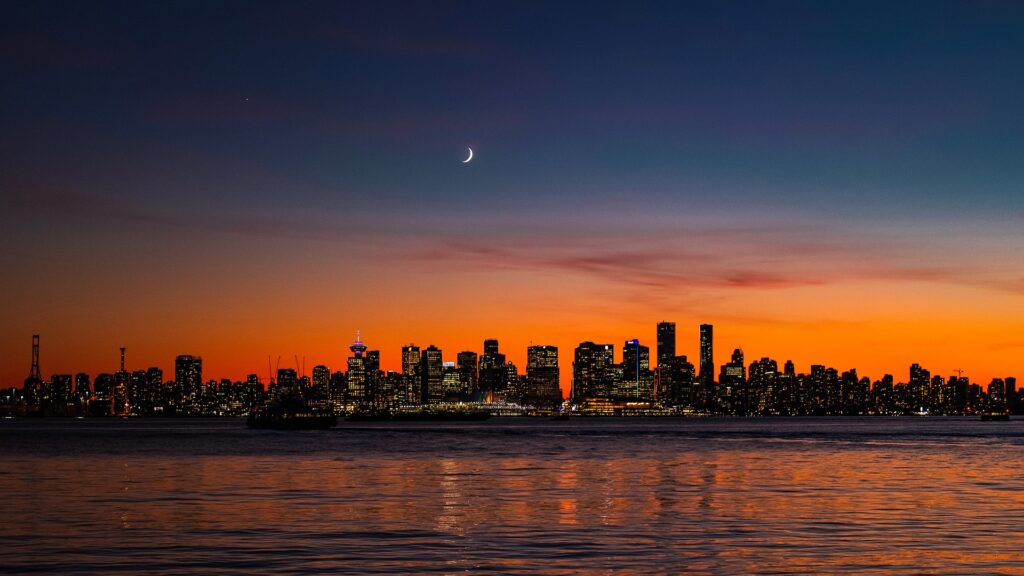
Image by Alex Agrico from Pixabay
Afterwards, take a stroll along English Bay Beach and enjoy a beautiful sunset view.
Day 2:
Take the SeaBus to North Vancouver and visit Lonsdale Quay Market for breakfast and a bit of shopping.
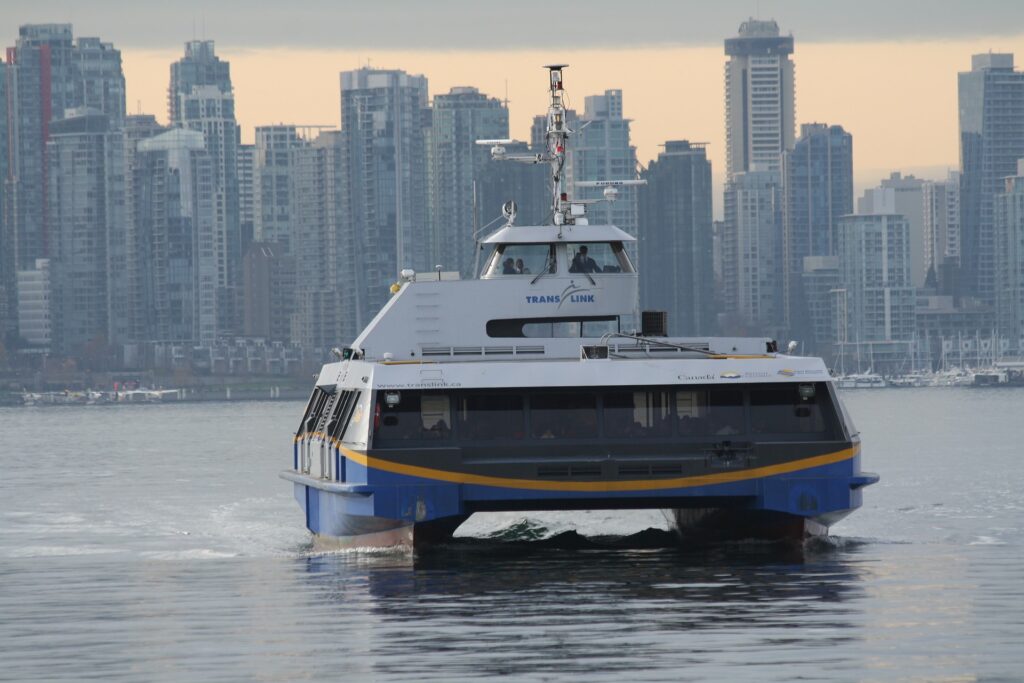
Image by David McCaughey from Pixabay
Lonsdale Quay Market is situated at the foot of Lonsdale Avenue and adjacent to the Lonsdale Quay transit terminal, which serves as a transportation hub for the SeaBus ferry connecting North Vancouver and downtown Vancouver.
Lonsdale Quay Market is known for its vibrant atmosphere and diverse offerings. The market features a variety of vendors, including fresh produce stands, specialty food shops, artisanal bakeries, fishmongers, butcher shops, and international cuisine stalls. Visitors can find a wide range of local and international products, including fresh seafood, organic produce, gourmet foods, spices, cheeses, sweets, and more.
In addition to the food-focused vendors, the market also includes specialty shops selling unique items such as locally made crafts, clothing, jewelry, home décor, and souvenirs. It provides an excellent opportunity to discover local artisans and their creations.
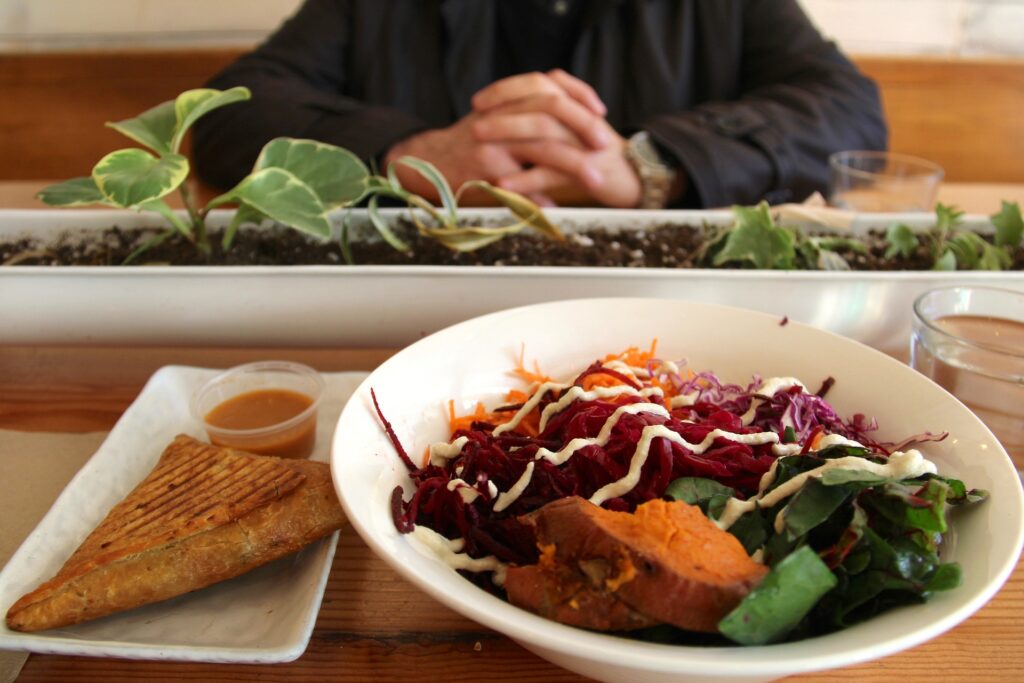
Image by Sima Ghaffarzadeh from Pixabay
The market is not only a shopping destination but also a gathering place for locals and tourists alike. It offers a picturesque waterfront location with scenic views of the Burrard Inlet and downtown Vancouver. Visitors can enjoy the waterfront promenade, relax in outdoor seating areas, and take in the vibrant atmosphere.
Lonsdale Quay Market also hosts various events and activities throughout the year, including live music performances, festivals, and seasonal celebrations. It is a hub of community engagement and a place where people come together to enjoy food, culture, and entertainment.
Additionally, the market is well-connected to the rest of North Vancouver and Greater Vancouver through public transportation, making it easily accessible for visitors from different areas.
In summary, Lonsdale Quay Market is a bustling marketplace in North Vancouver offering a wide range of fresh food, specialty products, and unique shopping experiences. With its stunning waterfront location, it serves as a gathering place for locals and tourists to explore, eat, shop, and enjoy the vibrant atmosphere.
Next, take the bus to Grouse Mountain. You can hike the Grouse Grind, or take the Skyride gondola to the top. Grouse Mountain is a popular tourist destination and outdoor recreation area. It is a prominent mountain peak in the North Shore Mountains, offering a range of activities and attractions for visitors to enjoy.
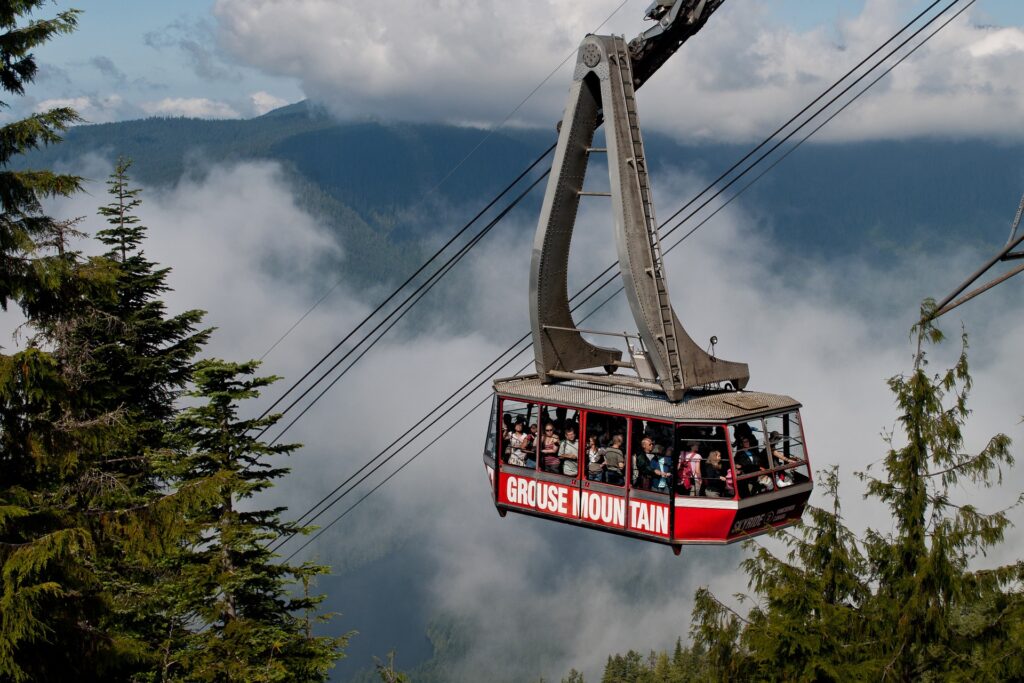
Image by James Wheeler from Pixabay
One of the main draws of Grouse Mountain is its accessibility. It is located just a 15-minute drive from downtown Vancouver, making it a convenient escape into nature for both locals and tourists. Visitors can reach the mountain by driving or taking the Grouse Mountain Skyride, a scenic gondola that offers breathtaking views of the surrounding area.
Grouse Mountain is known for its outdoor activities, especially during the winter season. It features a popular ski resort with a variety of slopes catering to different skill levels, from beginners to advanced skiers and snowboarders. The mountain is equipped with ski lifts, rental facilities, and ski schools for those who want to learn or improve their skiing or snowboarding skills.
In addition to skiing and snowboarding, Grouse Mountain offers other winter activities such as snowshoeing, ice skating, and sleigh rides. There are designated snowshoe trails that allow visitors to explore the mountain’s scenic winter landscapes at a more leisurely pace.
During the summer months, Grouse Mountain transforms into a hub for outdoor enthusiasts. Hiking is a popular activity, with numerous trails to choose from, ranging from leisurely strolls to more challenging hikes. The Grouse Grind, often referred to as “Mother Nature’s Stairmaster,” is a famous trail that attracts fitness enthusiasts looking for a challenging workout. The summit of Grouse Mountain offers panoramic views of Vancouver and the surrounding mountains.
Other attractions at Grouse Mountain include a wildlife refuge, where visitors can observe and learn about local wildlife such as grizzly bears and grey wolves. There is also a zipline course, a mountaintop restaurant, a lumberjack show, and various events and festivals throughout the year.
Grouse Mountain provides a combination of outdoor activities, breathtaking scenery, and convenient access, making it a popular destination for both nature lovers and adventure seekers visiting the Vancouver area.
After coming down from Grouse Mountain, take the shuttle bus to the Capilano Suspension Bridge Park. Walk across the suspension bridge, and explore the other attractions in the park like the Cliffwalk and Treetops Adventure.

The Capilano Suspension Bridge is a popular tourist attraction. The bridge is 460 feet long (140 meters) and 230 feet high (70 meters), stretching across the beautiful Capilano River. It was initially built in 1889 by George Grant Mackay, a Scottish civil engineer and park commissioner for Vancouver.
The bridge was made out of hemp ropes with a deck of cedar planks. It was later rebuilt in 1903 with wire cables. The current wire cable bridge dates from 1956 and is safe and well-maintained, able to hold the weight of numerous visitors at a time.
In addition to the suspension bridge, the park also includes the Treetops Adventure and the Cliffwalk. The Treetops Adventure is a series of seven suspension bridges attached to eight 30-ton, 250-year-old Douglas-firs. The Cliffwalk is a cliffside journey through rainforest vegetation on a series of unobtrusive cantilevered and suspended walkways jutting out from the granite cliff face above Capilano River.
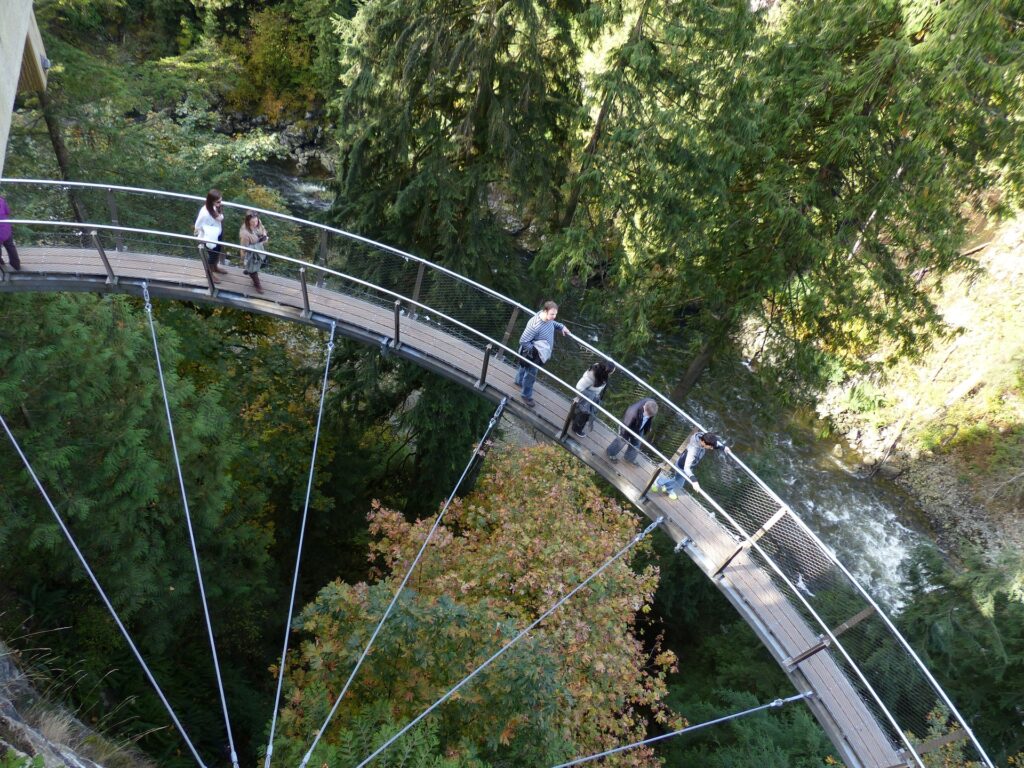
Image by Brigitte Werner from Pixabay
The park provides a unique opportunity to explore the natural beauty of the Pacific Northwest’s rainforest ecosystem from a variety of unique and thrilling perspectives. It offers not only breathtaking views but also educational experiences focused on the ecology and history of the area. As of my knowledge cutoff in September 2021, it remains one of Vancouver’s top tourist destinations.
Back in downtown Vancouver, have dinner at Gastown. This historic district is known for its Victorian architecture, unique shops, and diverse selection of bars and restaurants. Don’t forget to see the famous steam clock!
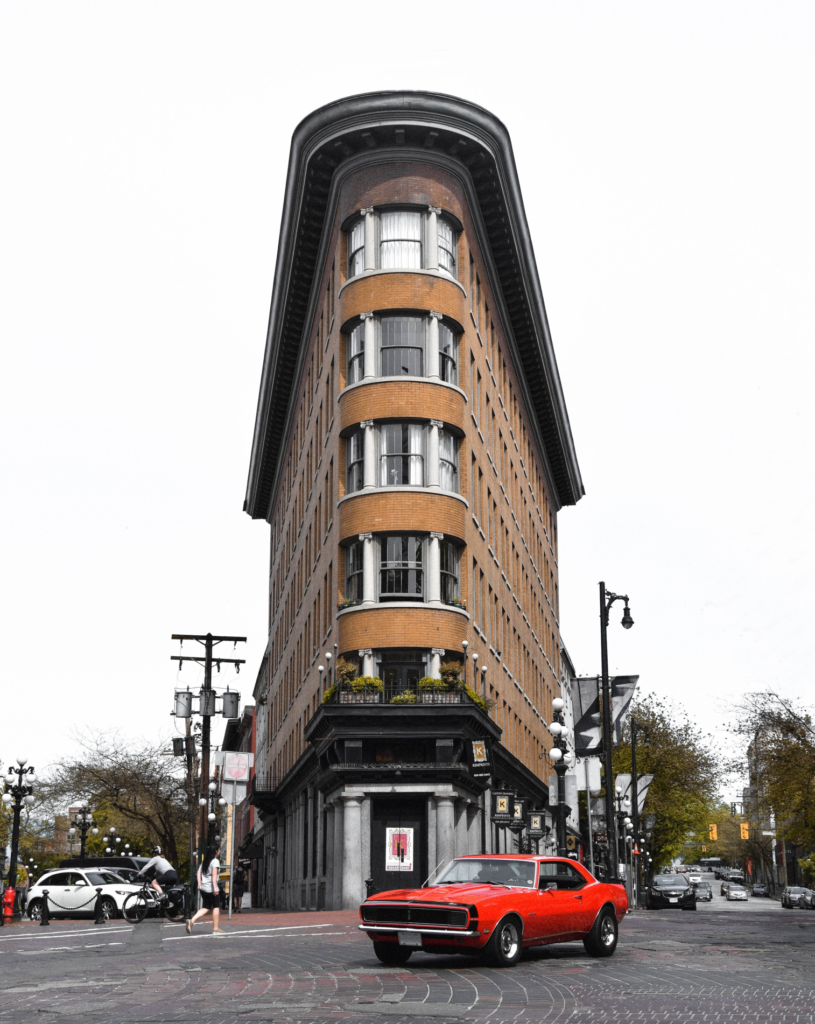
The district was originally established in 1867 by John ‘Gassy Jack’ Deighton, a Yorkshire seaman, steamboat captain, and barkeep. Deighton saw a future in this Burrard Inlet locale and opened a saloon for the workers in the area. The neighborhood quickly grew around his establishment, which is how Gastown found its name – it’s essentially named after “Gassy” Jack.
Gastown was designated a National Historic Site of Canada in 2009 because of its significance as the historic core of Vancouver, where the city was, essentially, born.
The area is known for its independent fashion boutiques, interior design shops, restaurants, nightclubs, and real estate offices. It’s also home to several tech companies, making it a significant part of Vancouver’s tech scene. Moreover, the neighborhood has a thriving arts scene with some of the city’s best art galleries, music venues, and events.
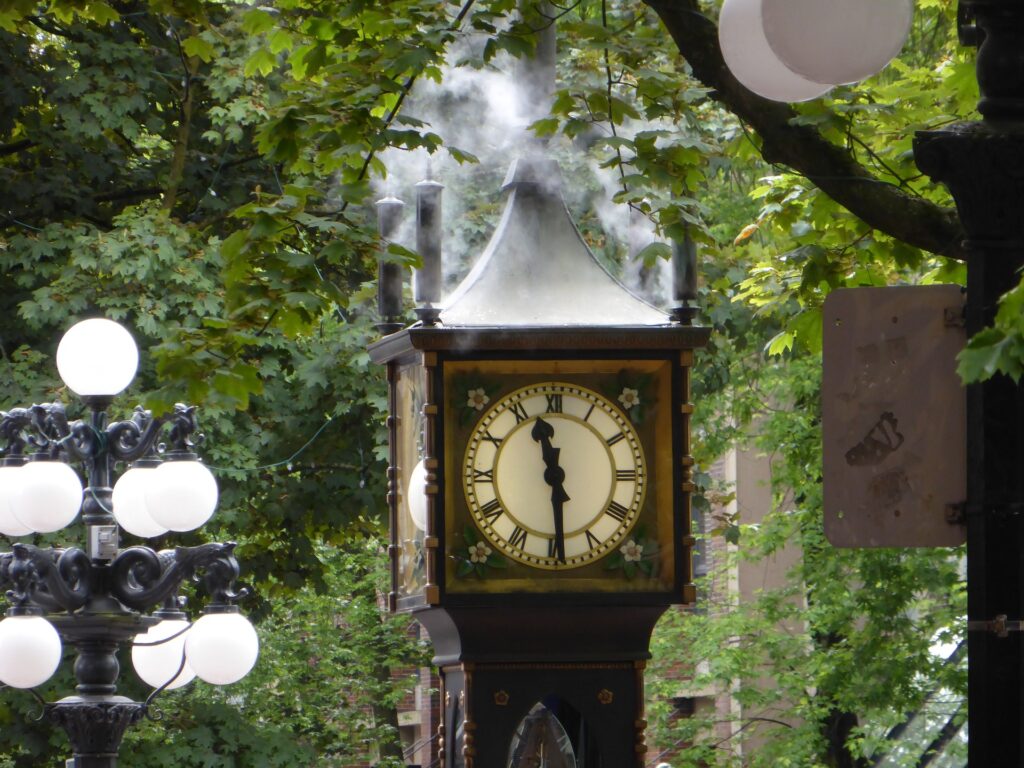
Image by Th Mulder from Pixabay
One of the iconic features of Gastown is the steam clock. This clock, powered by steam and whistles, was built in 1977 by Raymond Saunders. Every quarter-hour, the clock whistles and shoots steam from its five outlets, which attracts a crowd of tourists.
Gastown’s rich history, combined with its modern businesses and attractions, makes it a unique and vibrant part of Vancouver.
Day 3:
- Museum of Anthropology UBC
- UBC Botanical Garden
- Chinatown
- Dr. Sun-Yat-Sen Classical Chinese Garden
- Yaletown
- Canada Place
In the morning, Visit the Museum of Anthropology (MOA) at the University of British Columbia (UBC). It is a renowned institution recognized for its extensive collections, innovative research, and commitment to community engagement. This museum houses an impressive collection of First Nations totem poles and other indigenous artifacts.

Image by ELLE RITTER from Pixabay
The MOA is especially known for its display of arts and cultures from the indigenous peoples of the Pacific Northwest. A particular highlight of the museum is the Great Hall, where large totem poles, carvings, and other works from the Kwakwaka’wakw, Nisga’a, Gitxsan, Haida, and other First Nations are displayed.
The museum was opened in 1976, and it was designed by the Canadian architect Arthur Erickson, drawing inspiration from the post-and-beam architecture of northern Northwest Coast First Nations people. An outdoor sculpture complex, called the Museum Grounds, complements the collections inside the building, showing the interconnection between the cultures and the landscape in which they live.
The MOA also houses the Audrey & Harry Hawthorn Library and Archives, a leading resource for the study of indigenous art and cultures.
MOA is not only a museum but also an active research institution, closely connected with UBC’s Anthropology Department. It is committed to ethical collaboration with indigenous peoples and is involved in a range of initiatives relating to cultural understanding, preservation, and repatriation.
The Museum of Anthropology at UBC is a unique institution that provides valuable insights into the rich and diverse cultures of indigenous peoples, particularly those of the Pacific Northwest.
While you’re on campus, take a stroll through the beautiful UBC Botanical Garden that is a stunning display of plant diversity. Established in 1916, it is the oldest botanical garden at a university in Canada.

Image by Paul Brennan from Pixabay
Spread across 44 hectares (about 110 acres), the garden is divided into several areas that display plants from different regions and climates around the world. It’s especially noted for its collections of rhododendrons, alpines, hardy herbaceous perennials, wild collected Asian maples, Magnolia species, and other rare and endangered plants.
Key attractions in the UBC Botanical Garden include:
- Nitobe Memorial Garden: A traditional Japanese garden where each tree, stone and shrub has been deliberately placed and maintained to reflect an idealized conception and symbolic representation of nature. It is considered to be among the most authentic Japanese gardens in North America and among the top five Japanese gardens outside of Japan.
- David C. Lam Asian Garden: This garden features a collection of Asian plants, with a particular focus on plants from temperate East Asia. It’s home to over 400 kinds of rhododendrons, as well as many deciduous and evergreen trees and shrubs.
- Greenheart TreeWalk: A highlight for many visitors, this walkway takes you 20 meters above the forest floor, providing a bird’s eye view of Vancouver’s magnificent coastal temperate rainforest.
- Alpine Garden: This garden houses a diverse range of alpine plants from around the world, including North America, Asia, and Europe.
- Food Garden: Displays an array of food plants from around the world.
The UBC Botanical Garden is also committed to education and research, supporting both university research and community education on plant biology, biodiversity, and climate change.
In the afternoon, you can head back to downtown and have lunch at Chinatown. It’s one of the oldest and largest Chinatowns in Canada. Its history dates back to the late 19th century, when a significant number of immigrants arrived from China to work on the country’s expanding railroads and in the gold fields.

Over the years, it has evolved into a vibrant community with its distinct cultural character, rich history, and unique architecture. The streets of Vancouver’s Chinatown are lined with a variety of businesses, including grocery stores, herbal medicine shops, tea houses, bakeries, and restaurants serving traditional Chinese cuisine.
Notable landmarks and attractions in Vancouver’s Chinatown include:
- Dr. Sun Yat-Sen Classical Chinese Garden: Named after the father of modern China, this is an authentic representation of a Ming Dynasty-style garden, and it is the first of its kind outside China. It was created as a place of harmony and tranquility and is considered one of the most authentic classical Chinese gardens in the world.
- Chinatown Millennium Gate: Standing at the intersection of Pender Street and Taylor Street, this traditional Chinese gate serves as a prominent symbol of Chinatown. It was erected in 2002 and features both English and Chinese inscriptions.
- Chinese Cultural Centre: This center hosts a museum and various events related to Chinese culture and heritage.
- The Sam Kee Building: Listed in the Guinness Book of Records as the narrowest commercial building in the world.
The area is also known for its vibrant events, such as the annual Spring Festival Parade celebrating Chinese New Year. However, like many Chinatowns around the world, Vancouver’s has faced challenges due to urban redevelopment, but ongoing efforts aim to preserve its heritage and revitalize the community.
Visitors to Vancouver’s Chinatown have the opportunity to explore the area’s rich cultural history, enjoy traditional Chinese food, shop for unique items, and participate in various cultural events and festivals.
After lunch, visit Dr. Sun Yat-Sen Classical Chinese Garden, a peaceful oasis in the middle of the city. It is the first garden of its kind ever built outside of China.
The garden was built in 1985-1986 using the time-honored principles and techniques of the Ming Dynasty (1368-1644). Fifty-two master craftsmen from Suzhou, China, along with local laborers, used traditional methods and materials to build the Garden. The materials, including the rare yellow limestone rocks, were brought from China. The garden does not contain any nails, screws, or power tools in its construction, which is a testament to traditional Chinese architectural techniques.
For your dinner, go to Yaletown, another trendy neighborhood filled with boutiques and restaurants.
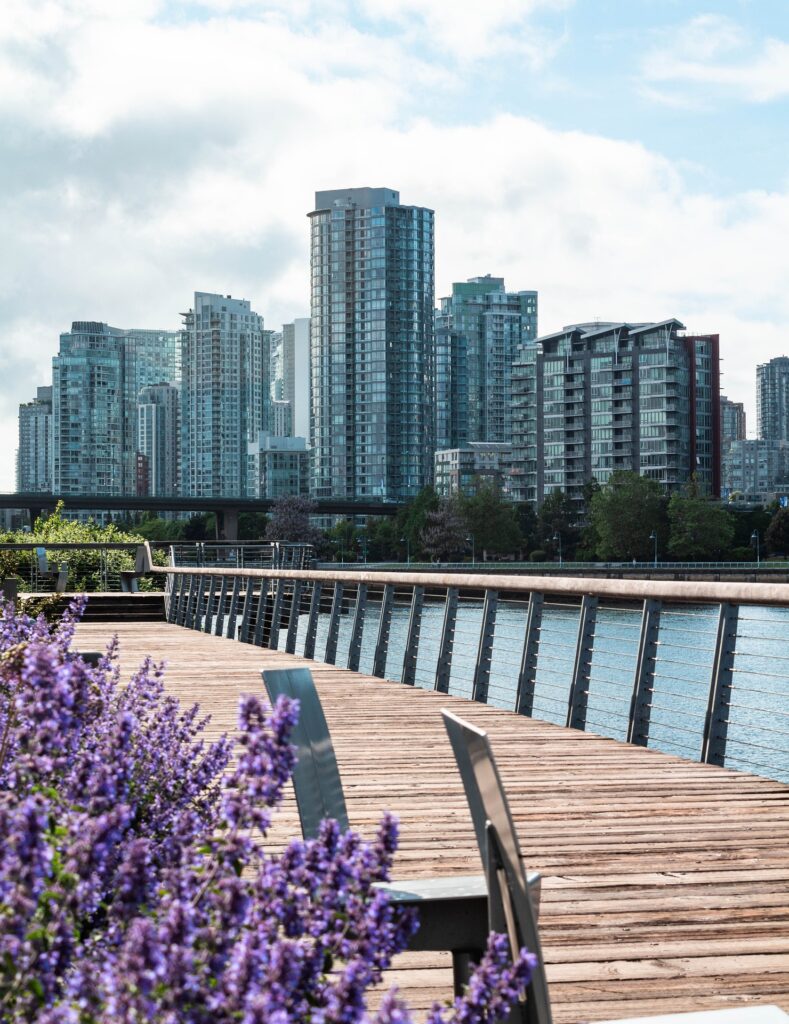
Image by 15296398 from Pixabay
Originally, Yaletown was the western terminus for the Canadian Pacific Railway, but it has been transformed into one of the city’s most chic and vibrant neighborhoods. Many of the red-brick warehouses that were originally built for the railway have been repurposed into loft-style apartments, trendy restaurants, and boutique shops, giving the area a unique blend of old and new.
Yaletown is well-known for its sidewalk cafes, gourmet restaurants, and lively nightlife. Whether you’re looking for a fancy meal, a craft beer, or a delicious pastry, you’ll find it in Yaletown.
Cap off your trip with a visit to Canada Place at night. It’s a beautiful sight with the sails lit up, and offers a great view of the harbor.
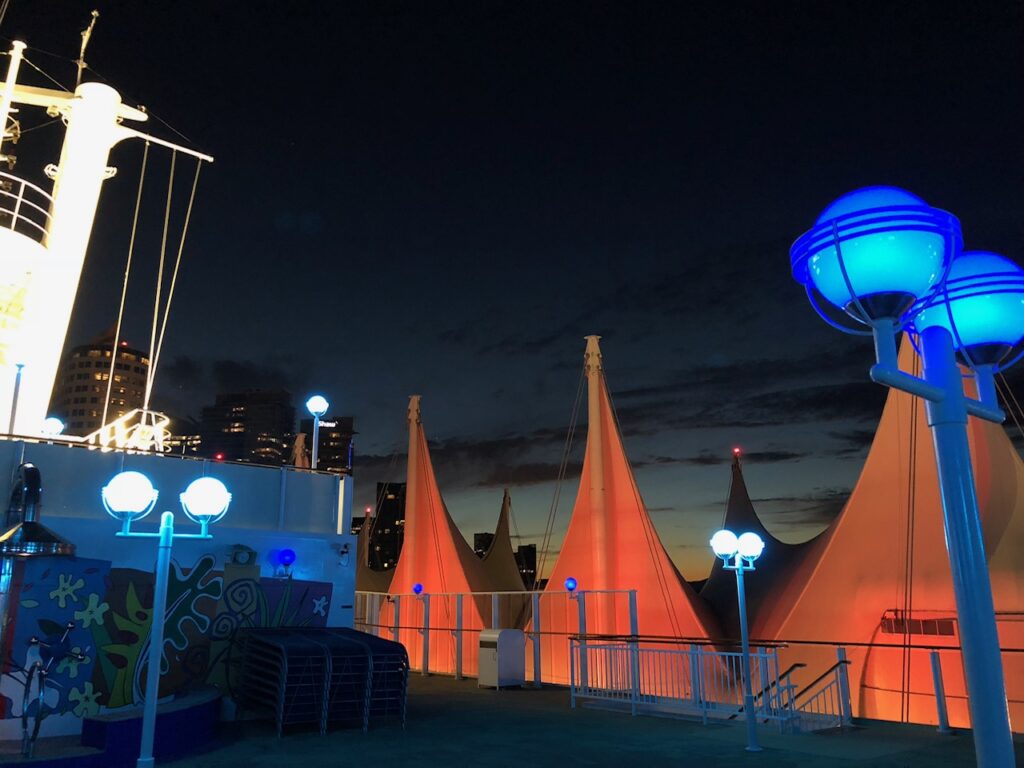
Canada Place, located in downtown Vancouver, is an iconic national landmark that welcomes both locals and visitors alike. It serves multiple functions as a convention center, a cruise ship terminal, and an entertainment complex.
Here are some key features of Canada Place:
- Design: One of the most recognizable features of Canada Place is its design, resembling a giant sailing ship with its distinctive white sails made of Teflon-coated fabric. It offers fantastic views of the city, the mountains, and the waterfront.
- Vancouver Convention Centre: Located within Canada Place, the Vancouver Convention Centre is a leading venue for conventions, meetings, and exhibitions.
- Cruise Ship Terminal: Canada Place serves as the main cruise ship terminal for the region, where ships heading to Alaska start their journey. The cruise ship terminal can accommodate the largest cruise ships in operation.
- FlyOver Canada: This is a popular tourist attraction, offering a 4D flight simulation ride across Canada, providing a bird’s-eye view of the country’s stunning landscapes.
- The Canadian Trail: This walkway on the west promenade represents Canada’s 10 provinces and three territories with informational plaques and stunning views of the harbour and North Shore mountains.
Remember to check the opening hours of the places you plan to visit, as they can change. Also, be prepared for the weather – Vancouver is known for its rainy climate, so bring a rain jacket just in case. Enjoy your trip!
Remember to check the opening hours of the places you plan to visit, as they can change. Also, be prepared for the weather – Vancouver is known for its rainy climate, so bring a rain jacket just in case. Enjoy your trip!
Image by Vlad Vasnetsov from Pixabay


